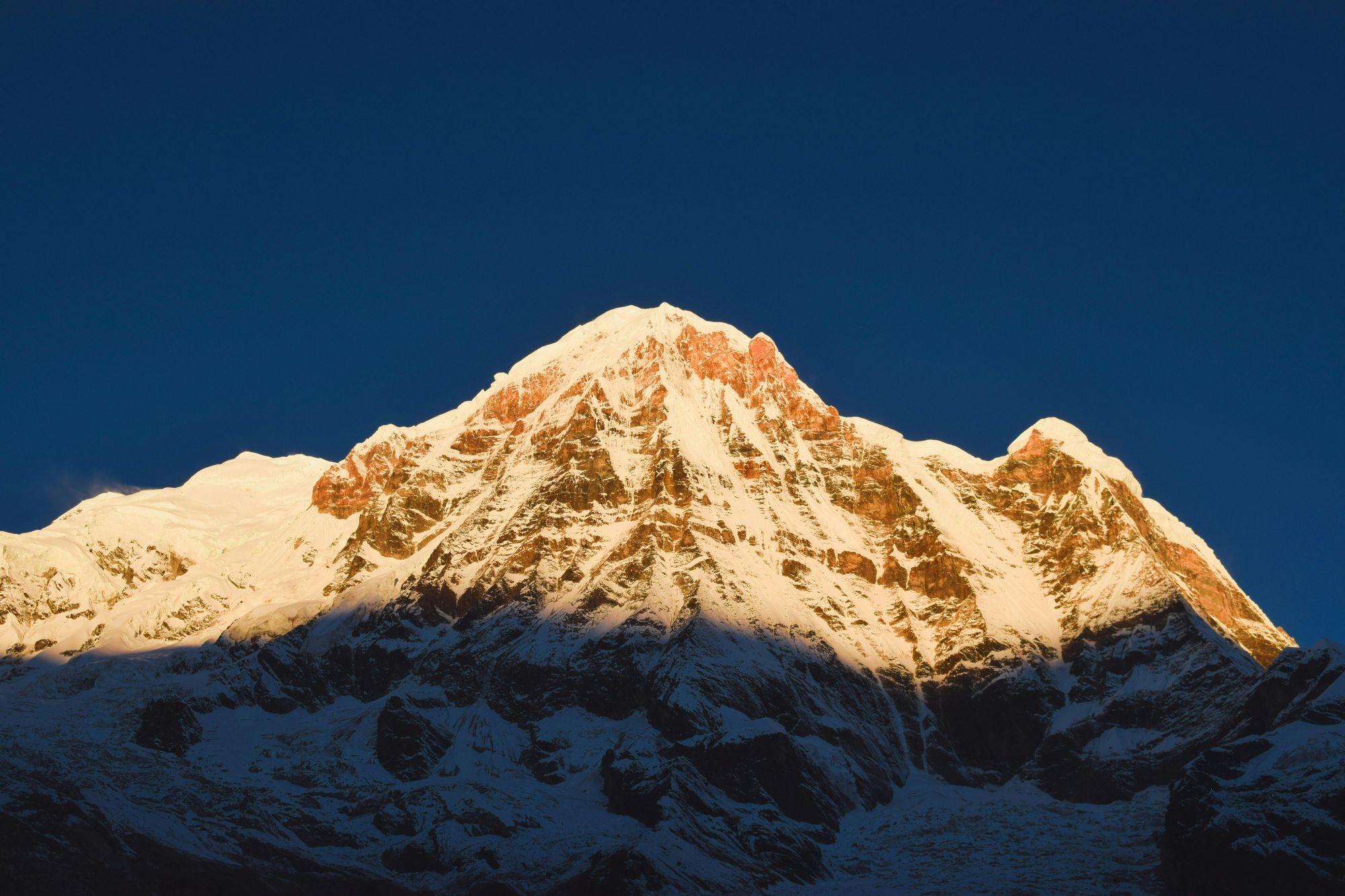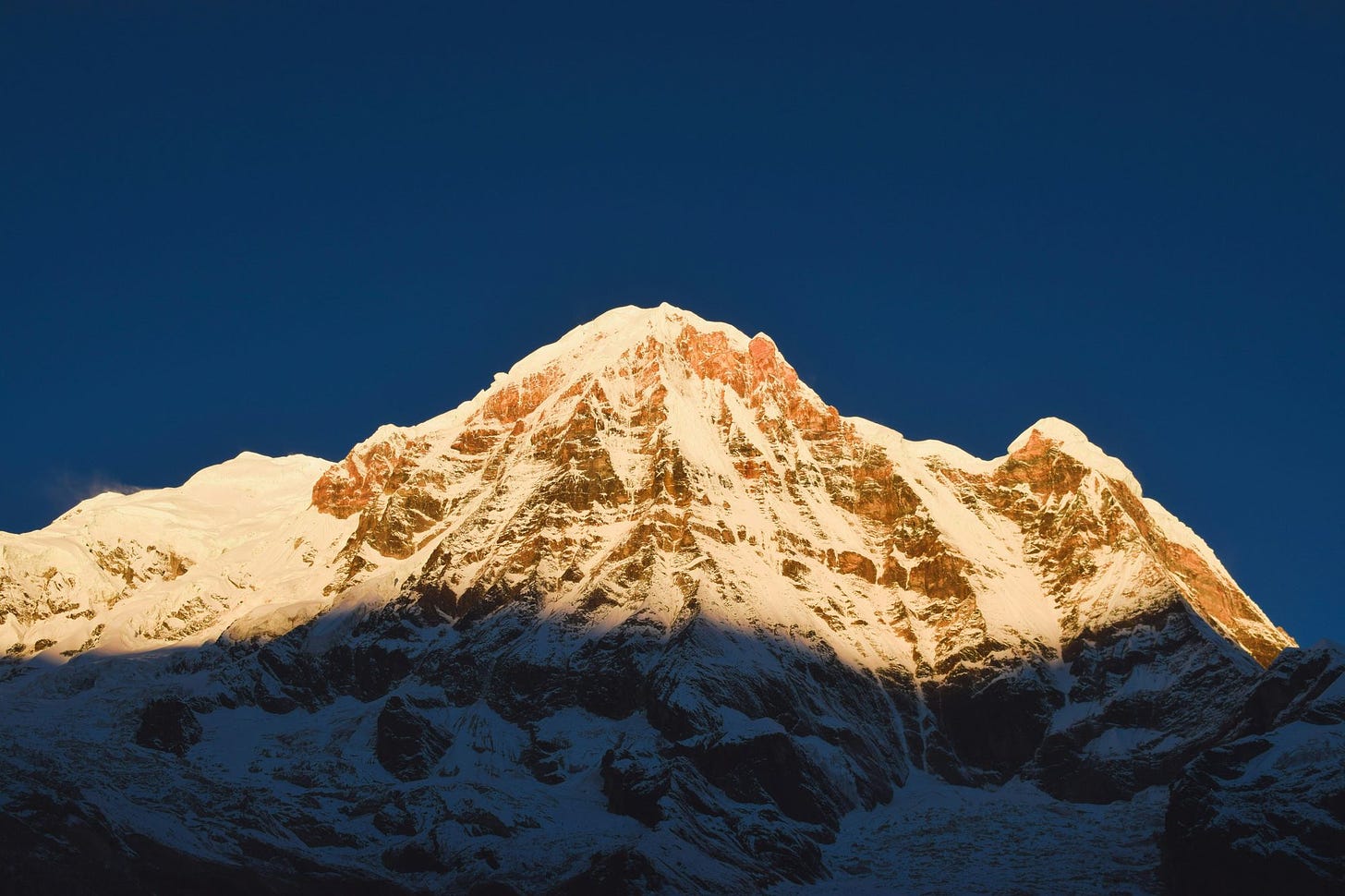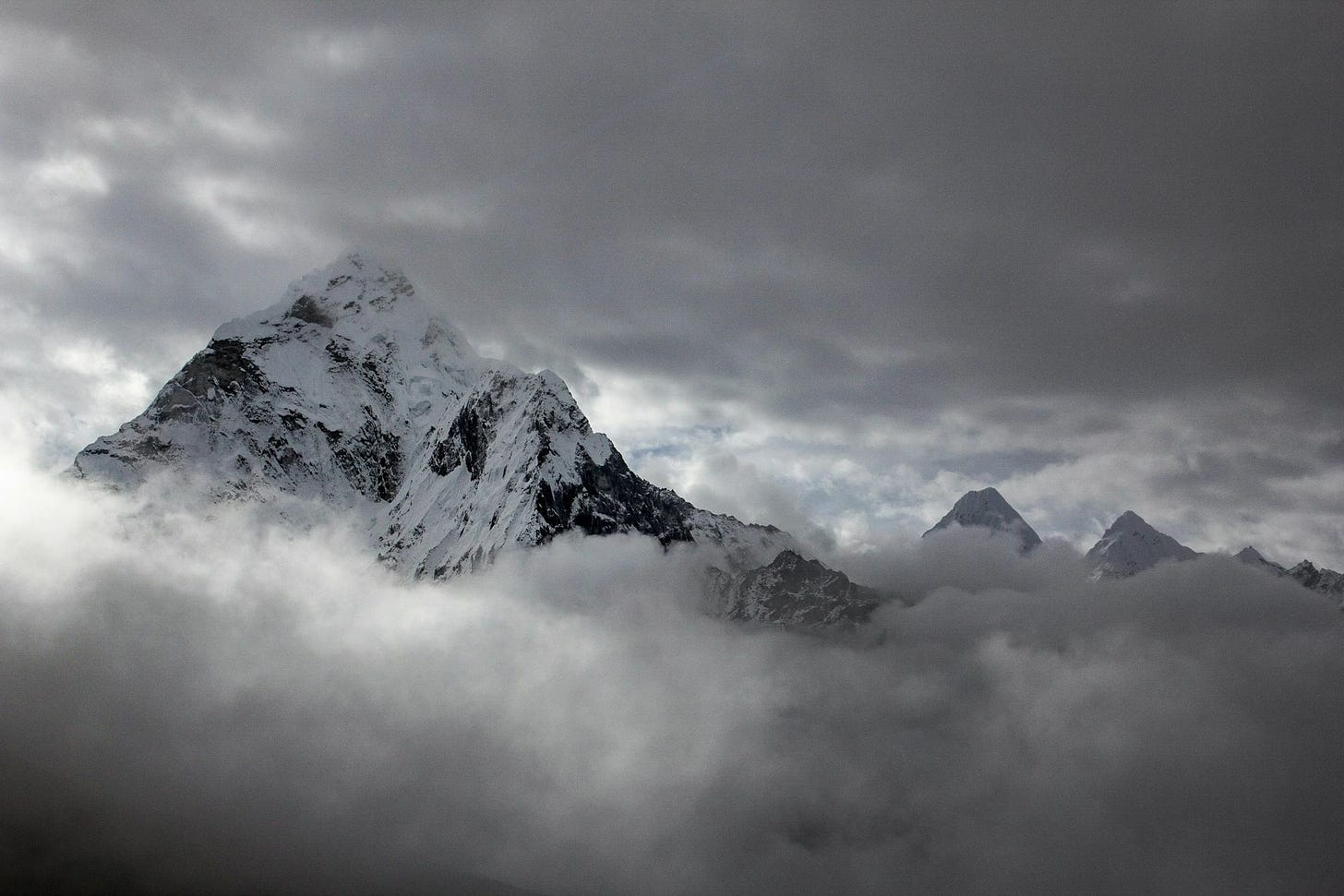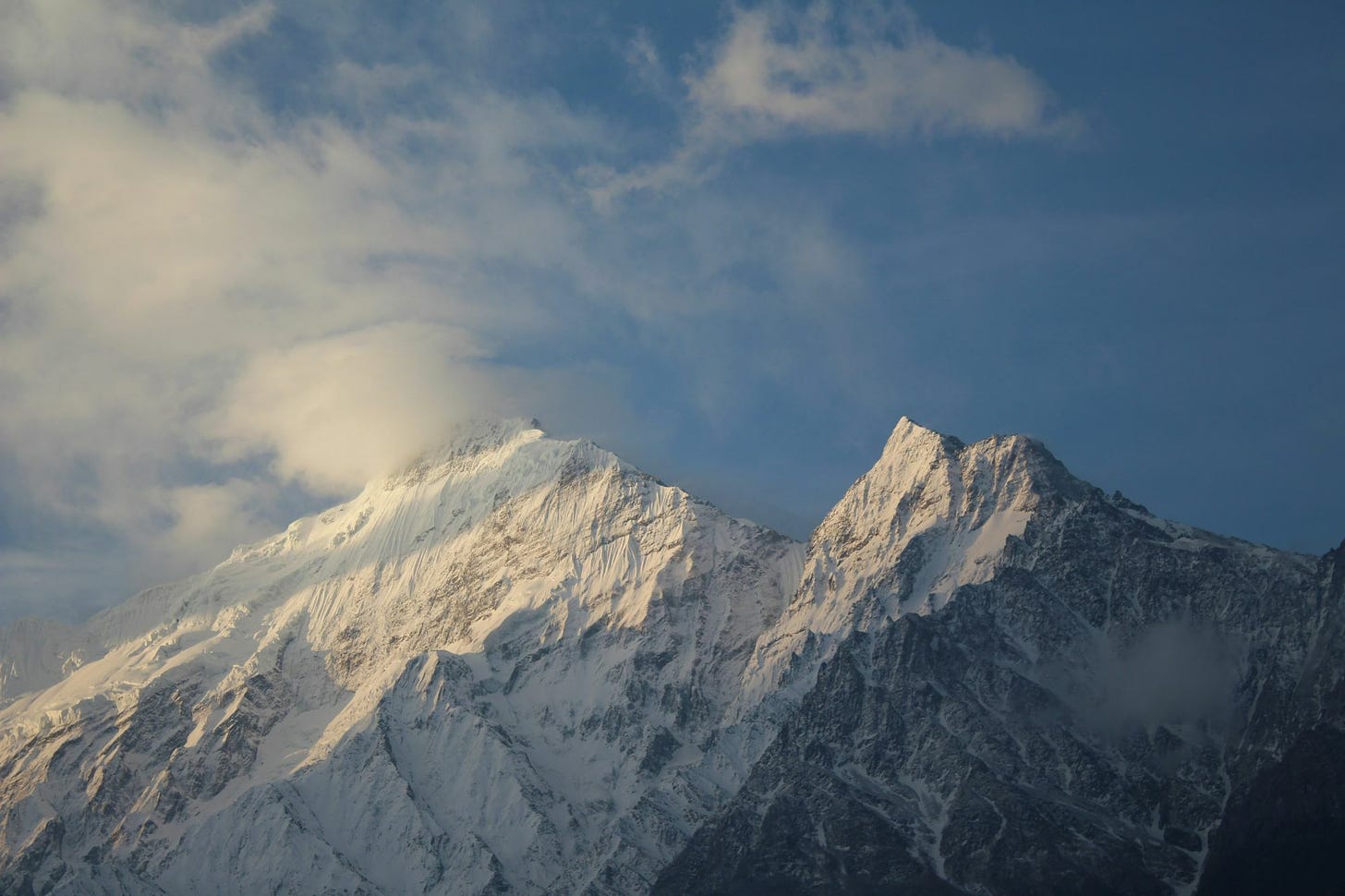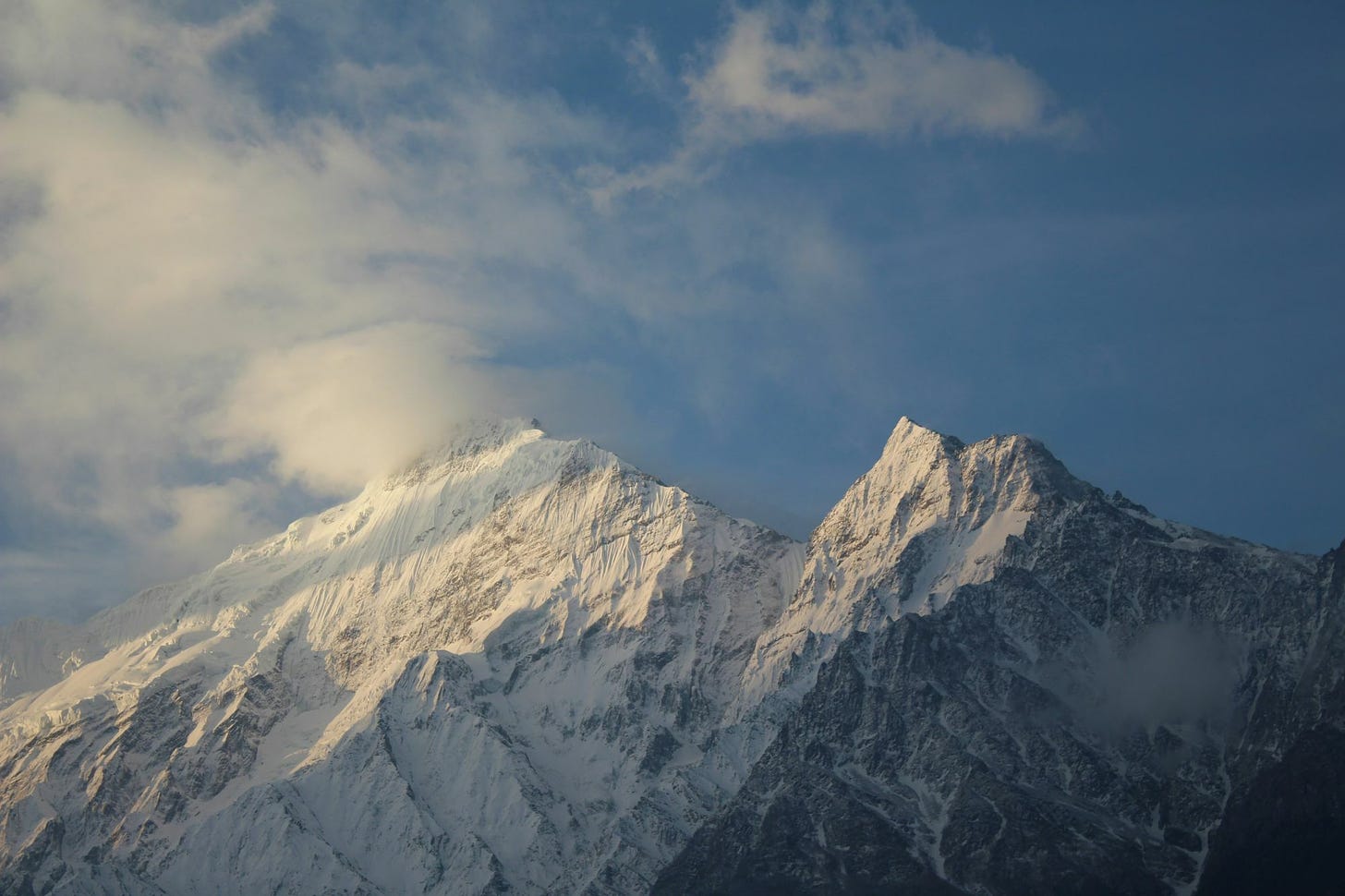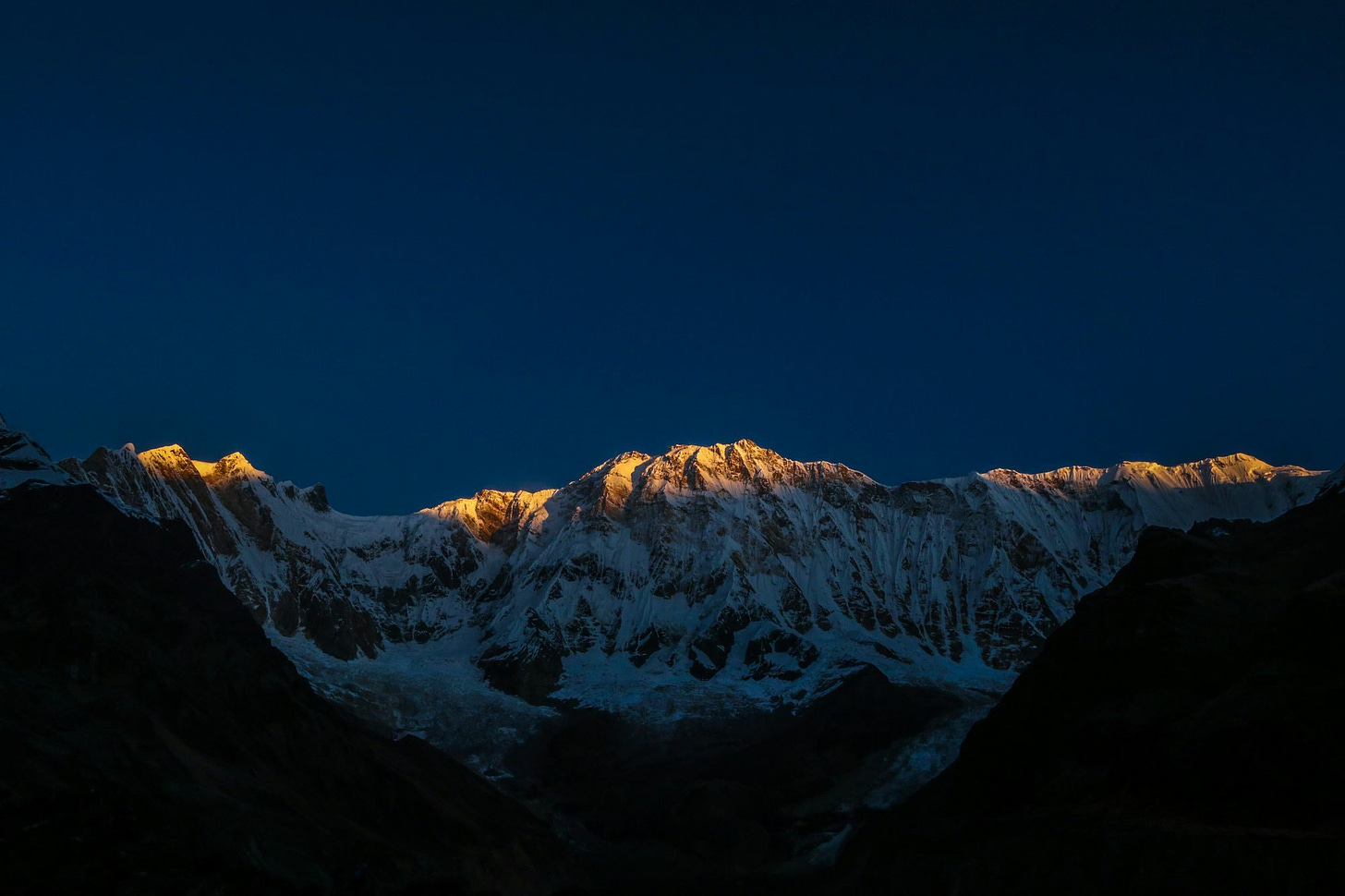Nepal, the land of the Himalayas, offers some of the world's most breathtaking and adventurous trekking experiences. From high-altitude trails to culturally rich paths, trekking in Nepal promises an unforgettable journey through majestic landscapes and vibrant local cultures. Whether you are an experienced trekker or new to the trails, Nepal has something to offer everyone, including those interested in solo female travel. This blog will explore the best treks in Nepal, highlighting their unique features and providing essential tips for a successful and safe adventure, especially for solo female travelers looking to explore this magnificent country. With proper preparation and respect for local customs, trekking in Nepal can be an empowering and enriching experience for women traveling alone.
Annapurna Base Camp Trek
Overview
Duration: 7-14 Days
Difficulty: Moderate
Maximum Altitude: 4210 meters
Accommodation: Teahouses
Best Time: March-May & September-December
The Annapurna Base Camp (ABC) Trek is one of the most popular treks in Nepal, starting and ending in Pokhara, a picturesque tourist spot by Phewa Lake. This trek offers a stunning journey through diverse Himalayan landscapes, including towering peaks like Annapurna, Dhaulagiri, Hiunchuli, and Machhepuchhre.
Highlights
-
Poon Hill Sunrise: Witness a stunning sunrise at Poon Hill (3210 meters), a popular viewpoint offering panoramic views of the Annapurna and Dhaulagiri mountain ranges.
-
Gurung Villages: Experience the rich traditions and lifestyle of the Gurung community in villages like Ulleri, Ghorepani, and Chhomrong.
-
Natural Beauty: Trek through breathtaking glaciers, clean rivers, and lush green mountains.
-
Hot Springs: Relax in the natural hot springs at Jhinu Danda after a long day on the trail.
Tips
-
The trek can get crowded during peak seasons (October-November). For a more serene experience, consider trekking during the autumn months (September-December).
-
Be cautious of avalanche-prone areas between Hinku Cave and Deurali. If necessary, take a detour for safety.
Everest Base Camp Trek
Overview
Duration: 12-15 Days
Difficulty: Moderate
Maximum Altitude: 5545 meters
Accommodation: Teahouses
Best Time: March-May & September-December
The Everest Base Camp (EBC) Trek is a dream for many adventurers. Situated in the Khumbu region of northeastern Nepal, this trek takes you to the base of the world's highest peak, Mount Everest (8,849 meters).
Highlights
-
Kala Patthar: For an explicit view of Mount Everest, hike to Kala Patthar (5545 meters).
-
Namche Bazaar: Explore Namche Bazaar, the trade center of the Khumbu region, offering vibrant markets and local culture.
-
Tengboche Monastery: Visit the oldest and most significant Buddhist monastery in Khumbu.
-
Local Cuisine: Try local Sherpa and Nepalese cuisines and beverages at cozy teahouses along the trail.
Tips
-
Flights to and from Lukla Airport are often delayed or canceled due to bad weather. Plan for extra days in Kathmandu to accommodate possible delays.
-
Acclimatize properly to avoid Acute Mountain Sickness (AMS). Spend a few days in Kathmandu before starting your trek and ascend slowly.
Upper Mustang Trek
Overview
Duration: 10-17 Days
Difficulty: Moderate
Maximum Altitude: 4200 meters
Accommodation: Teahouses
Best Time: May-October
The Upper Mustang Trek offers a unique exploration of the ancient, forbidden Buddhist kingdom of Lo, nestled in Mustang. This trek is renowned for its well-preserved culture and stunning landscape of red cliffs and challenging terrain.
Highlights
-
Lo Manthang: Explore the ancient walled city of Lo Manthang, the capital of Upper Mustang.
-
Sky Caves: Discover 10,000 sky caves and ancient sky burials, offering a glimpse into Mustang's historical civilization.
-
Monasteries: Visit some of the oldest monasteries in the Upper Mustang Valley.
-
Muktinath: A sacred shrine for both Buddhists and Hindus, located in Muktinath.
Tips
-
Solo trekking is prohibited in Upper Mustang. You need at least two trekkers to obtain a Restricted Area Permit (RAP).
-
Hire a guide due to the high and windy landscape, which can be challenging to navigate.
Manaslu Circuit Trek
Overview
Duration: 12-14 Days
Difficulty: Strenuous
Maximum Altitude: 5110 meters
Accommodation: Teahouses
Best Time: March-May & September-December
The Manaslu Circuit Trek is an underrated and off-the-beaten-path trek, leading to the border area between Nepal and China. This trek offers breathtaking views of the rugged Manaslu region and rich biodiversity.
Highlights
-
Larkya La Pass: An exhilarating journey over Larkya La Pass (5106 meters).
-
Mountain Views: Spectacular views of Manaslu, Lamjung Himal, Ganesh Himal, and other peaks.
-
Cultural Experience: Explore the ancient Tsum and Nubri communities and their rich Tibetan and Nepalese cultures.
Tips
-
The Manaslu Circuit Trek requires a Restricted Area Permit (RAP). Solo trekking is not allowed.
-
Be cautious of steep and rocky sections and potential landslides during the monsoon season.
Annapurna Circuit Trek
Overview
Duration: 7-15 Days
Difficulty: Strenuous
Maximum Altitude: 5416 meters
Accommodation: Teahouses
Best Time: March-May & September-November
The Annapurna Circuit Trek is a famous high-altitude trek in Nepal, taking you through northern villages such as Manang, Chame, Pisang, and Jomsom. This trek offers an adventurous journey through diverse landscapes and ancient communities.
Highlights
-
Thorong La Pass: Walk across the world's highest mountain pass at 5416 meters.
-
Muktinath: Visit the holy pilgrimage site for both Buddhists and Hindus.
-
Kali Gandaki Gorge: Experience the world's deepest gorge, the Kali Gandaki Gorge.
-
Cultural Exploration: Encounter ancient monasteries and explore the communities of Manangis and Marwaris.
Tips
-
The Annapurna Circuit Trek can be crowded during spring and fall. Plan your trek accordingly to avoid crowds.
-
Proper acclimatization is crucial due to the high elevation. Trekking during the monsoon season (June-August) can be risky due to landslides.
Essential Tips for Trekking in Nepal
Acclimatization and Fitness
-
Ensure proper acclimatization to prevent altitude sickness. Ascend slowly and take rest days.
-
Physical fitness is essential for high-altitude treks. Engage in regular cardio and strength training exercises before your trip.
Packing Essentials
-
Clothing: Pack layers of clothing to adjust to varying temperatures. Include a warm jacket, thermal wear, and waterproof clothing.
-
Footwear: Sturdy, comfortable hiking boots with good ankle support are crucial.
-
Gear: Carry a backpack, trekking poles, a headlamp, and a sleeping bag. A water purification system or tablets are also recommended.
Health and Safety
-
Obtain comprehensive travel insurance that covers high-altitude trekking and emergency evacuation.
-
Stay hydrated and maintain a balanced diet. Avoid alcohol and smoking during the trek.
-
Be aware of the symptoms of Acute Mountain Sickness (AMS) and seek immediate help if needed.
Cultural Respect
-
Respect local customs and traditions. Dress modestly and ask for permission before taking photographs.
-
Support local communities by staying in teahouses and purchasing locally made products.
Best Time to Treks
-
The best time to trek in Nepal is during the pre-monsoon (March-May) and post-monsoon (September-December) seasons. The weather is generally stable, with clear skies and moderate temperatures.
Conclusion
Trekking in Nepal offers an unparalleled adventure through some of the world's most stunning landscapes and culturally rich regions. This Himalayan nation is a trekker's paradise, providing a myriad of trails that cater to both seasoned hikers and beginners. Whether you choose the popular Annapurna Base Camp Trek, renowned for its breathtaking Himalayan vistas and diverse terrain, or the less-trodden Manaslu Circuit Trek, which offers a more remote and off-the-beaten-path experience, each trail promises unique experiences and breathtaking views. The key to a successful trekking journey in Nepal lies in proper preparation and respect for local cultures. By following essential tips such as acclimatizing gradually, packing the right gear, and staying hydrated, you can ensure a safe and memorable trekking journey. Additionally, supporting local communities by staying in teahouses and purchasing locally made products enriches your experience and helps sustain the region. For more detailed guides and tips on trekking in Nepal, consider visiting the best travel guest posting site, which offers valuable insights and firsthand accounts from experienced trekkers.



